Scratch is a vibrant online community where users from all over the world create and share interactive media such as stories, games, and animations. As an educational tool designed primarily for children and teens, Scratch makes programming accessible and fun. The unique identifier “Game:2uagmwejvg4= Scratch” refers to a specific project or aspect within the Scratch ecosystem, which showcases the flexibility and variety available on the platform.
Scratch’s user-friendly interface introduces the basics of computer programming and develops systematic reasoning and creativity. The platform is developed by the MIT Media Lab and is free, supporting a vast community of users who collaborate and learn from each other. This introduction sets the stage for anyone interested in diving into the world of digital creation, offering a gateway to the more technical aspects of coding through a playful and engaging environment.
Table of Contents
Getting Started with Scratch
Starting with game:2uagmwejvg4= scratch is straightforward, making it perfect for beginners of all ages. To begin, users need to create a free account on the Scratch website, which allows them to save and share their projects. Once logged in, the interface presents a stage, a coding area, and a block palette filled with coding commands categorized by motion, looks, sound, events, control, sensing, operators, and variables. Users can drag blocks from the palette and snap them together to create scripts that control their projects. For your first project, try making a simple animation or a basic game to get familiar with how these blocks interact with each other. This hands-on approach helps build a solid foundation in programming logic as users see their commands come to life in real-time.
Core Features of Scratch
game:2uagmwejvg4= scratch offers a multitude of features that empower users to create complex projects. The key components include:
- Sprites: Objects that perform actions. Users can add multiple sprites to their projects, each with unique scripts.
- Costumes: Different appearances for sprites, which can be changed in the middle of a project to animate a sprite.
- Sounds: Users can incorporate sounds into their projects, either from the Scratch library or uploaded from their device.
- Backdrop: The background of the project can be changed to different scenes to enhance storytelling.
- Extensions: These allow users to integrate more complex blocks for video sensing, translation, and even connecting to external hardware like the micro.
Educational Benefits of Scratch
game:2uagmwejvg4= scratch not only introduces programming concepts but also enhances problem-solving skills, creativity, and systematic thinking. Educators around the world use game:2uagmwejvg4= scratch as a tool to teach these skills through project-based learning. Here are some key educational benefits:
- Creativity: Students can create projects that express their personal interests and ideas.
- Problem Solving: As they build projects, they learn to troubleshoot and solve programming issues.
- Mathematics: Programming with game:2uagmwejvg4= scratch involves logical thinking and understanding coordinates and variables.
- Collaboration: The game:2uagmwejvg4= scratch community encourages sharing projects and learning from others’ work.
These educational outcomes make Scratch a powerful tool in modern digital literacy.
Tips and Tricks for Using Scratch
For both new and experienced game:2uagmwejvg4= scratch users, here are some tips to enhance your project creation experience:
- Start Simple: Begin with simple projects to understand the basics before moving to more complex programming concepts.
- Use Comments: Add comments to your scripts to remember why you made certain programming choices.
- Explore Tutorials: Scratch offers tutorials that can guide you through different types of projects.
- Join the Community: Engage with other creators, participate in challenges, and get feedback to improve your skills.
Community and Support in Scratch
The Scratch community is a vibrant and supportive space where creators share their projects, get feedback, and find inspiration. It features:
- Forums: Where users ask questions, share tips, and connect with other Scratchers.
- Studios: Themed collections of projects where users collaborate and explore specific topics or challenges.
- Events: Regularly organized challenges that encourage users to try new types of projects and learn new skills.
Future of Scratch
Scratch continues to evolve, with updates that add features and improve user experience. Future developments are expected to include more advanced blocks, enhanced support for mobile devices, and deeper integration with other educational tools. Staying engaged with the community and its updates ensures that users can take advantage of all that game:2uagmwejvg4= scratch has to offer.
Conclusion
Scratch is an expansive platform that goes beyond simple coding by fostering a comprehensive set of skills in young learners and adults alike. Whether you’re starting out or looking to deepen your programming knowledge, game:2uagmwejvg4= scratch offers tools and community support to help you achieve your creative goals.
FAQs about Scratch
- Is Scratch suitable for young children? Yes, Scratch’s intuitive block-based coding is designed for ages 8 and up.
- Can I use Scratch without an internet connection? While Scratch is primarily online, an offline editor is available for download.
- How can educators use Scratch? Teachers can incorporate Scratch into their curriculum to enhance lessons on digital literacy, math, and more.
Read More : SumoSearch


